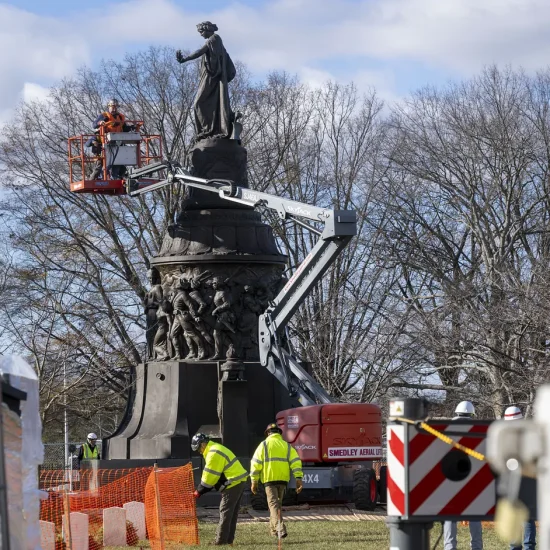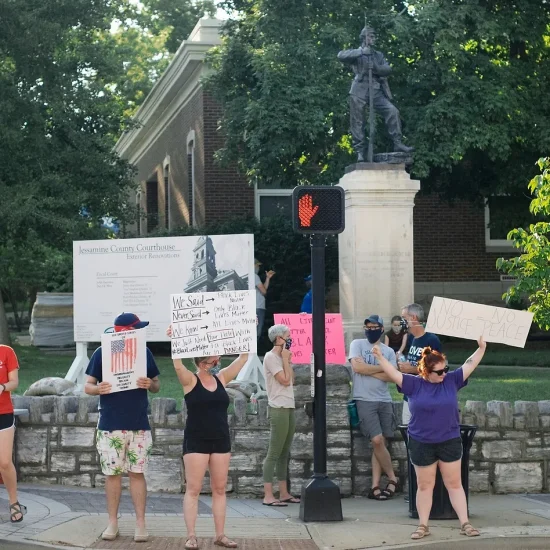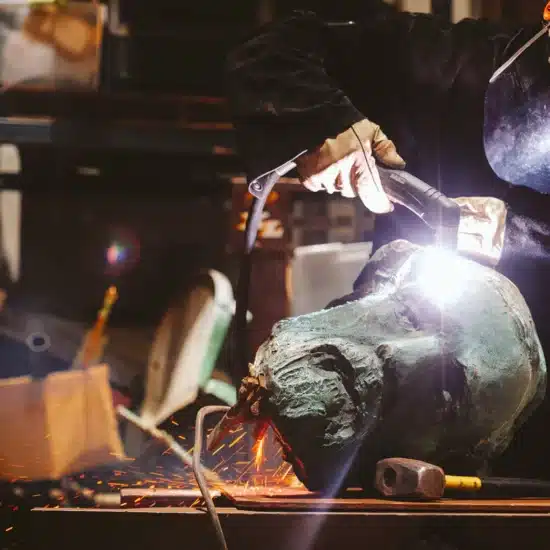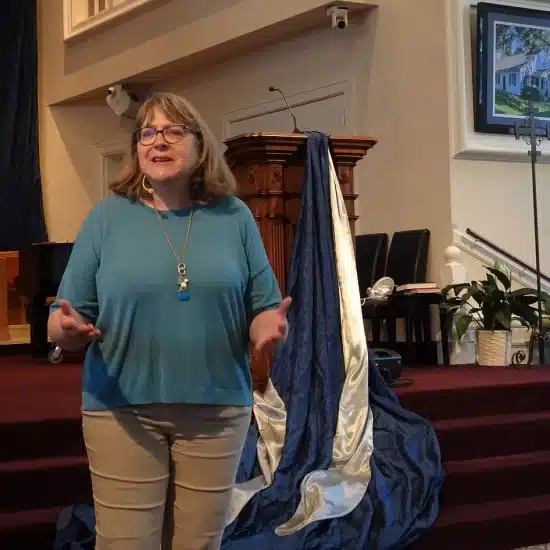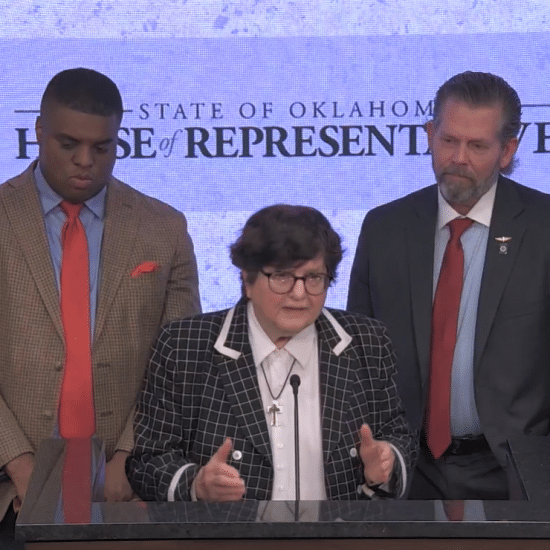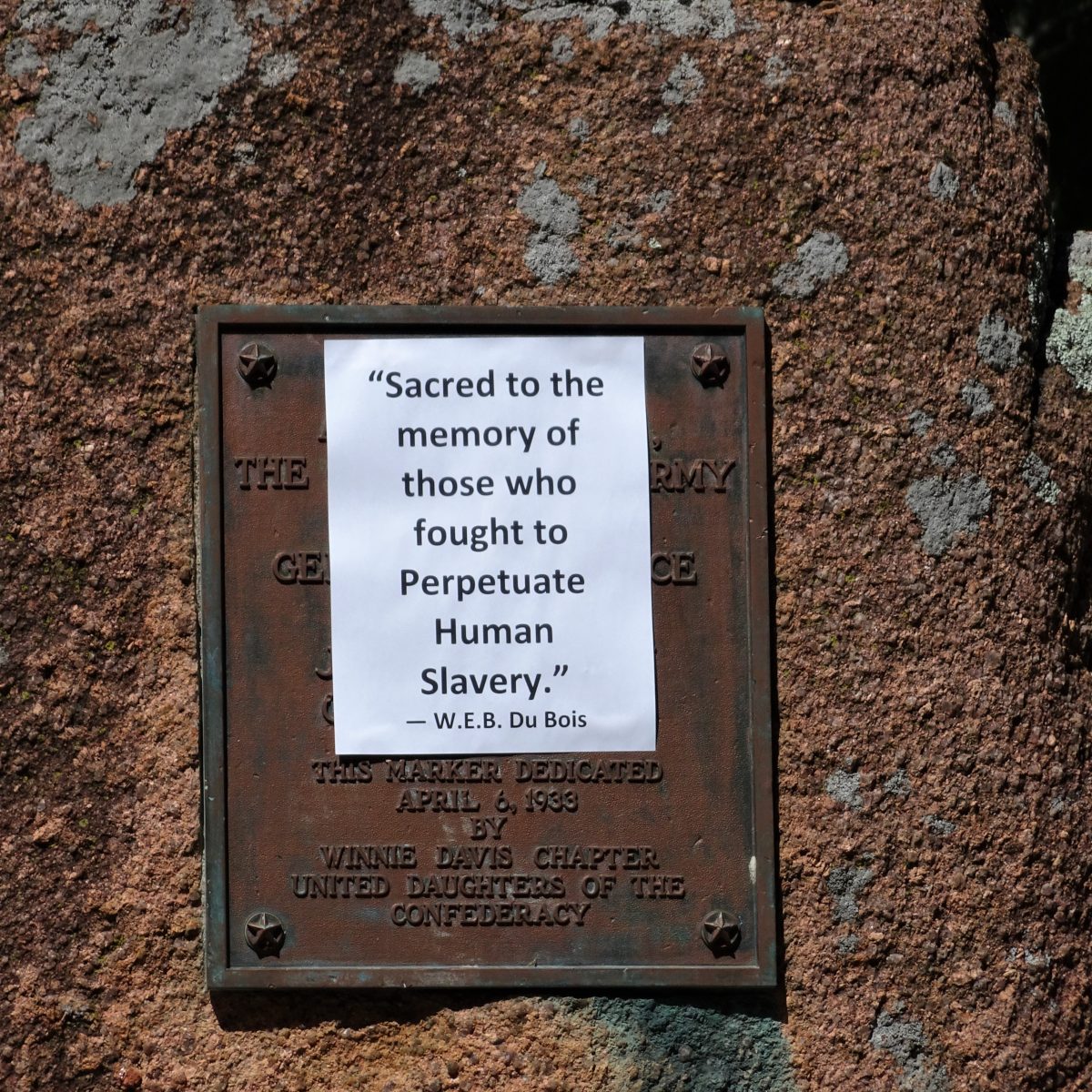
Early on Tuesday (Oct. 20), workers in the capital of Missouri removed the city’s lone Confederate monument after months of advocacy by community leaders that included Word&Way Editor Brian Kaylor. The city council voted 8-2 the previous evening to remove the rock after holding multiple meetings and hearings on the issue.
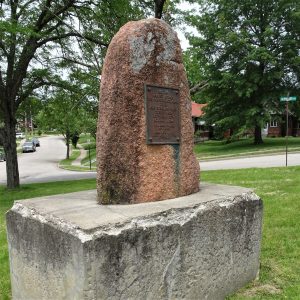
Confederate monument in Jefferson City, Missouri. (Brian Kaylor/Word&Way)
The marker, placed in Jefferson City in 1933 by the United Daughters of the Confederacy, honored the Confederate general and slaveholder Sterling Price even though Price retreated from his attack on the city in October 1864. Price’s failed effort to take control of the state, the last significant Confederate campaign west of the Mississippi, ended a few weeks later after he lost larger battles.
As Confederate monuments and statues across the country started coming down in June following the police killing of George Floyd, Kaylor penned a Jefferson City News-Tribune letter urging the city to do likewise. He called the plaque “historically inaccurate” and “offensive.” Noting that the “dumb rock” honored the loser of the skirmish instead of the Union soldiers who protected the city, Kaylor added that it “might be one of the most pathetic Confederate memorials.”
As others in the community spoke about the marker in the newspaper, on social media, and with dueling online petitions, city officials eventually started considering the issue. Among those who lead the push for removal were Nimrod Chapel, the president of the Missouri NAACP; Jay Barnes, an attorney who previously served as a Republican state representative for part of the city; and former resident Paul Kiekhaefer, who is a management consultant in the Washington, D.C., area. Cornell Sudduth, pastor at Second Baptist Church, also urged removal of the marker.
Official Discussions
The city’s Human Relations Commission voted on July 17 to ask the City Council to remove the monument. On Aug. 26, the city’s Historic Preservation Commission held a public hearing before also voting to recommend the City Council remove the monument. Kaylor testified virtually at that hearing.
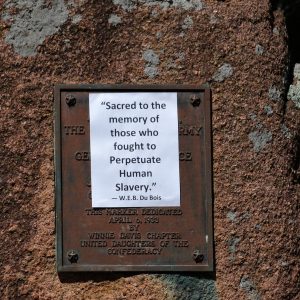
In 1931, W.E.B. Du Bois argued against Confederate monuments but said if built they should have an honest inscription: “Sacred to the memory of those who fought to Perpetuate Human Slavery.” On Aug. 20, the 401st anniversary of Black enslavement in the U.S., Kaylor placed the quote on the Confederate marker in Jefferson City, Missouri. (Brian Kaylor/Word&Way)
“Monuments and memorials are not about history, but honor,” he argued. “We teach the past in classes and books. Monuments, on the other hand, are about who we wish to honor today and what values we wish to honor in the future.”
“That is why you will not find memorials to Adolf Hitler across Germany but we all still learn about his evils,” Kaylor added. “Likewise, we do not need a monument honoring a traitor and enslaver to learn about the evils of the Confederacy and its lost cause of enslaving Black people. So, removing this marker will not be rewriting or erasing history. It will be removing an honor to a traitor and enslaver.”
Following the recommendations of the two commissions, the City Council held a hearing on Sept. 21 on the question of removal. But the councilmembers voted just before hearing testimony to punt the issue to two Council committees for more discussion among the members.
Kaylor testified at that meeting. But since many others were present to address the inaccuracy and inappropriate of the monument, he instead used his time to honor those enslaved by the man honored by the city’s marker.
“If we are concerned about erasing history, let us turn to those too often forgotten,” he said. “To pretend this traitor and enslaver is worthy of honor adds to our history of forgetting those he enslaved. We should say their names. Unfortunately, they are mostly erased, lost to history like millions of other Black men, women, and children held in bondage in this nation. Too often their names are forgotten, their graves unmarked or overgrown, and their lives ignored. But their lives mattered.”
Kaylor told the Council he checked U.S. Census data to learn that Price enslaved at least 29 individuals. And Kaylor announced he found the names of two of them: Adam Tucker and Henry.
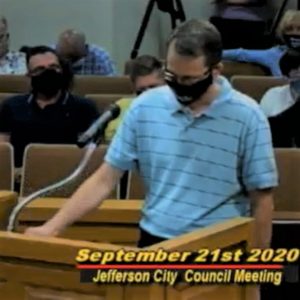
Screengrab of Brian Kaylor knocking on the podium during the Sept. 21 City Council meeting in Jefferson City, Missouri.
“It is time for us to remember those we have too often erased from the story. I will use the remainder of my time to honor them,” Kaylor said. “Since I cannot call out all their names, I will instead knock 29 times, one time for each of those held in bondage by the traitor and enslaver we honor. As I do, please reflect on the fact that each knock represents a life. Each knock represents a person who had their labor and dignity stolen by the traitor and enslaver we honor. Each knock represents someone trapped in an evil institution that left them vulnerable to rape, torture, and murder. Each knock represents a reason why you should remove this dishonorable monument.”
Kaylor then knocked on the podium 29 times, calling out the names of “Henry” and “Adam Tucker” during the last two knocks.
The two City Council subcommittees considered the issue on Oct. 7 and Oct. 8, and sent the matter back to the full Council. On the evening of Oct. 19, the Council voted. Then about 12 hours later, a crew removed the rock, shattered the concrete base, filled in the hole, and tossed straw over the area.

